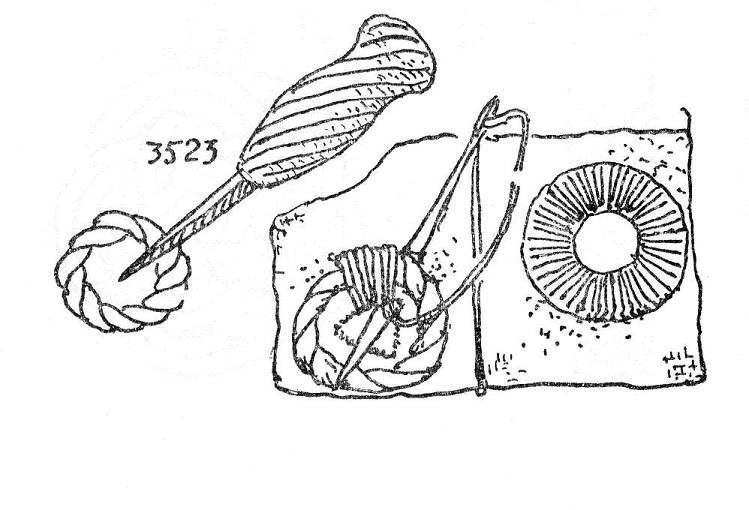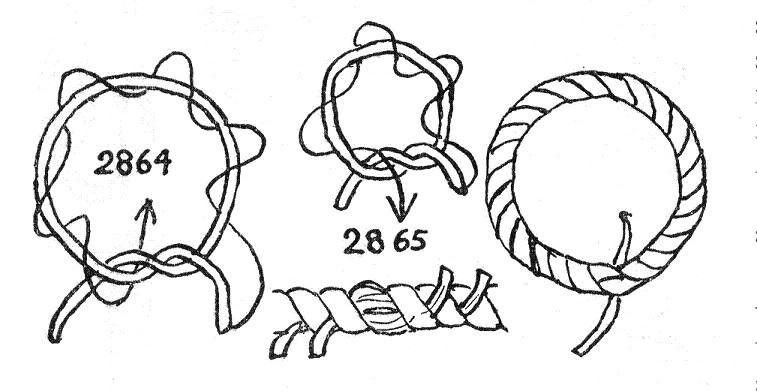I've noticed a general disdain for the use of grommets in tarp shelters.
Modern tarps with their stamped metal grommets are obviously not PC but that is not the only type of grommet.
Sailors have been making twisted rope or cord grommets for centuries which were sewn into sails in what were properly called eyelets. These would not be out of place in a period tarp shelter, especially if your personna is an Easterner from somewhere near the seaboard.
Ashley's Book of Knots by Clifford W. Ashley gives the following information on eyelets:


Just FYI.
Old Coot
Modern tarps with their stamped metal grommets are obviously not PC but that is not the only type of grommet.
Sailors have been making twisted rope or cord grommets for centuries which were sewn into sails in what were properly called eyelets. These would not be out of place in a period tarp shelter, especially if your personna is an Easterner from somewhere near the seaboard.
Ashley's Book of Knots by Clifford W. Ashley gives the following information on eyelets:

3523. In making eyelet holes in a sail, small grommets (#2864) of the right size are first to be made, either a single strand or a full-size piece of marline being used, according to the size required. The ends of the grommet need be stuck but once. A hole is pricked through the canvas, either with a stabber, which has three edges, or with a pegging awl, which has four. The grommet is placed on top of the hole and the needle is stuck down at the far side of the grommet and up through the hole. One should always sew to the right along the far side, and put the stitches close together, covering the grommet completely and evenly. A number of threads are put in the needle at a time and these are well waxed and sewed "over and over." p.558

2864, 2865. The COMMON GROMMET is made with a single strand in two ways. After completing two circles with any wanted number of loose turns, start the third circuit either as #2864 or as #2865, and continue to lay the strands parallel. The ends are finished off as in a LONG SPLICE. These two starts make all possible grommets of three leads. A grommet in Manila is tied preferably with a single strand of four-strand rope. In tarred hemp, grommets are made of small stuff, the full size. EYELET HOLE GROMMETS in sails are of marline or small wire. The length of strand required for a grommet is three times the circumference of the grommet plus six times the round of the rope.
Marline = a small usually tarred line of 2 strands
Round of the rope = the length of a single strand in one complete passage around the rope. p. 470
Just FYI.
Old Coot




